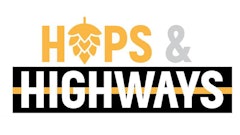This week, we discuss growing contractor optimism, five things we know about the Bipartisan Infrastructure Law and the importance of job costing. You can register for a free webinar on job costing here.
Want to win a Hops & Highways/Asphalt Drum Mixers Jacket? Enter the form below to win!
Jess: There’s not too much road building news to report, but I was in Las Vegas this week and I can tell you that contractor optimism is high. That was backed up by a report released by Wells Fargo who says that the benchmark U.S. National Optimism Quotient registered 112. Wells Fargo calls any reading above 100 “strongly optimistic.” At 112, the 2022 Optimism Quotient score represents a significant increase of 44% compared to the 2021 Optimism Quotient of 78.
Dormie: Some of the executives that we've surveyed have concerns about the earlier part of the year, but they feel that their concerns early in the year will diminish. And by the end of the year, they're expecting increasing profits as well as an increase in revenues. Some reasons for the increase in optimism are due to the infrastructure bill, but more so due to the belief that supply chain disruptions are going to slow down, as will COVID’s interference on our operating environment.
Jess: The increasing amount of COVID-19 treatments and vaccines should help reduce unplanned factory closures and port disruptions, which will allow production to catch up with demand. In fact, building-material pricing and availability are already becoming more contractor friendly. Add to that the winter season that brings a seasonally slow period for construction projects in the Northeast and Midwest and supply constraints appear to be easing slightly which could potentially free up resources for the South and West.
Dormie: Finally, Wells Fargo says that worker shortages should improve in 2022. The absence of fiscal support and rising wages across the construction industry will help convince sidelined workers to return. Less restrictive immigration controls should also help augment the supply of labor and we will drink to that because we all know we’re going to need the help in 2022 and beyond!
:::WE DRINK:::
Jess: While we have been talking at length about the Bipartisan Infrastructure Bill, there has not been any real tangible information about what we actually know about it, besides some large funding levels. So we want to share five things we know for certain about the BIL. First, it puts an emphasis on public-private partnerships. Public-private partnerships have become more popular for civil construction projects across the U.S. in the past 20 years, according to education company Lorman. The infrastructure act, which mentions Public private partnerships 42 times, will likely popularize this type of procurement method further. Many types of initiatives listed in the act contain grantee selection criteria that consider non-federal contributions to a
Dormie: second: It boosts union and minority jobs. President Joe Biden said the BIL will QUOTE: drive the creation of good-paying union jobs,UNQUOTE and labor union leaders lauded its passage. The vast majority of infrastructure act funds will be covered by Davis-Bacon act worker protections. In addition, the Disadvantaged Business Enterprise (DBE) programs already in place at the U.S. DOT and the Federal Transit Administration create targets for DBE business participation in federal contracts, and will ensure that at least part of the funds are awarded to businesses led by women and people of color.
Jess: Next, it encourages the use of technology. We talk about technology adoption all the time and won’t stop because it’s going to be imperative for the growth of your business. The BIL contains $20 million per year over five years, for a total of $100 million, for advanced digital construction management systems and related technologies. The new program aims to maximize interoperability with other systems, boost productivity, reduce project delays and cost overruns, manage complexity and enhance safety and quality.
Dormie: The fourth thing we know is that the BIL focuses on environmental projects. This legislation marks the first major federal investment to adapt to the impacts of climate change, and also seeks to remediate ongoing sources of pollution and environmental degradation. In particular, the law seeks to make infrastructure more resilient to extreme weather, and to adopt greener technologies.
Jess: Finally, like we talked about last week, the BIL is going to take some time to implement. States are being asked to name infrastructure Implementing this massive program will continue to require internal planning, internal and public review, hiring staff and building knowledge resources to stand-up these new operations but Biden said that Americans would start to see the impacts of the BIL QUOTE: within the next two to three months as we get shovels into the ground: UNQUOTE. And we’ll drink to that!
:::WE DRINK:::
Dormie: So how’s your slow season going? We’ve heard a lot of contractors saying they are already gearing up for the 2022 paving season and you should be too. So today we’re going to talk about the importance of job costing and share with you a webinar next month that can help you improve your job costing operations.
Jess: Most contractors know the importance of job costing and almost all would like to get better information out of their job costing systems. Job costing is the driver of accurate estimating, accurate scheduling, effective management of field performance, and effective bonus systems. Setting up an effective job costing system requires a deft touch, a short and simple approach, and an incredible understanding of employee behavior. Missing the mark by just a little bit results in the collection of useless information which defeats the purpose of tracking job costs.
Dormie: First, you need to track the time spent on the major tasks. You will never be able to estimate and schedule accurately without that information. Be firm with your foreman and bookkeeper that they record and store that information accurately. You have to make proper tracking a non-negotiable. One great piece of advice? Change your time cards. Assign cost codes to each major task and put the codes on the back of the timecard. Focus on the activities that account for 80% of their time. A good rule of thumb is to never try to track more than four activities per crew per day.
Jess: For example, each crew will have its own set of cost codes. On a forming crew, they might track layout time, forming time, break-down and clean-up. They also track the part of the job they are working on, whether it is footings, slabs or walls, etc. You should also track your equipment by the job. Unless all jobs need the exact same equipment, you need to spread the cost of the equipment only over the jobs that use it.
Dormie: If you roll your equipment costs into overhead, you may end up over-estimating the cost of jobs that don't need the equipment and under-estimating the cost of the jobs that do need it. You might lose good jobs and win bad ones.
Jess: This is just the tip of the iceberg on job costing and we know it sounds tedious or difficult and in the past perhaps it was. But it’s important to recognize that Job Costing does not need to be merely an aspiration. Fortunately, with the help of technology and a little bit of diligence, it is easier than ever to incorporate consistent and effective Job Costing into your business.
Dormie: Job costing is essential to the long term health of every construction company and we want to make sure you get it right. Join us for a free and informative webinar February 15th to learn more. We’ll be sure to post the registration link below.
Jess: That’s all we have for you today! We’re heading to the National Asphalt Pavement Association Conference in Arizona next week and will be sure to bring back all the news for you from the event. Make sure to sign up to win the Hops & Highways jacket and we’ll announce the winner on next week's show. Thanks for joining us!


























